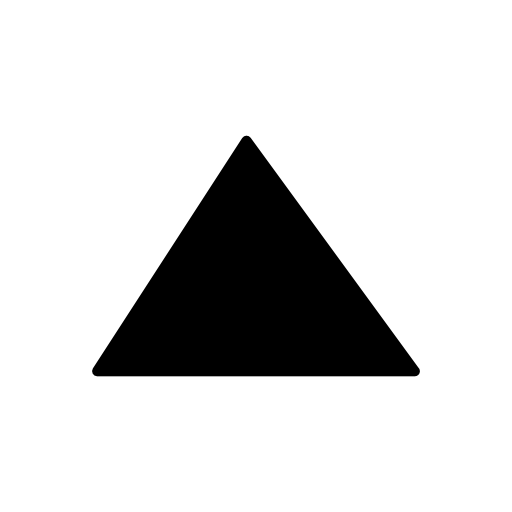You may know what you want to say to summarise your points, but do you know how to start a conclusion Paragraph correctly? You’re not alone in scratching your head, unsure where to begin.
Any essay’s conclusion paragraph is an extremely vital part of the document that is sometimes disregarded. You can write the most fantastic, powerful essay with solid ideas. But if you don’t correctly wrap it up in your conclusion, your entire argument will fall apart. To put it another way, a weak conclusion can make your reader feel as if they lack the closure they require to agree with your entire statement.
So, how do you go about correcting this and crafting a fantastic summary that engages your audience? That’s why we’re here to assist you. Don’t worry if you come to the finish of your essay and start to feel the pressure! Learn how to start a conclusion paragraph right now, and you’ll create an impression on your reader that will stay a long time.
What exactly is the purpose of a conclusion?
Table of Contents
When learning how to start a conclusion paragraph, it’s critical to first comprehend why your conclusion is so crucial.
Essentially, your conclusion paragraph is the section of your essay where you show your reader that you’ve accomplished what you claimed you’d do at the start (in your introduction). To put it another way, you’re providing your reader with the information they need to create their own opinion or choice about your issue or views.
Your conclusion informs your reader that they have reached the end of your article and that it is now time to consider the data and facts you have presented. You’re leaving readers hanging and giving them nothing to process after you’ve put your heart and soul into your essay if you don’t include this.
YOUR FINAL PARAGRAPH SHOULD ALWAYS LEAVE A LASTING IMPACT.
The purpose of your essay conclusion is to create a lasting impact on your reader or offer them something to think about. It’ll be the last part of your paper they read, and it’ll probably be the last thing they remember. therefore, the majority of the people seem confused about how to start a conclusion paragraph effectively.
Your last impressions are just as important as your first ones. Have you ever walked away from an awkward interaction with someone after saying something embarrassing? When this happens, you usually worry that the other person will think you’re weird or uncomfortable due to those last few moments. That’s a lasting impression, and it’s no different when it comes to your writing projects.
According to some writing instructors, think of your essay opening as an appetizer, your body as a fantastic dinner, and your conclusion as the dessert. Because you ate it last and used it to offer a sweet finish to your dinner, you’re likely to recall the flavor of the desert. The same can be said about your conclusion.
START NARROW AND BUILD OUT
When deciding how to start a conclusion paragraph, the best approach is to begin limited and then expand with additional material as you go.
Consider your final paragraph as a triangle. While your introduction should be in the shape of an upside-down triangle, with comprehensive information leading to a focused thesis statement, your conclusion should be the polar opposite. It should be concise, leading to a more general conclusion. Essentially, you’re doing the same thing you did at the start of the paper, but in reverse.
So, if we utilise shapes to show the content of the essay, it would look like this:
Introduction

Thesis statement
Body of Essay

Rephrased thesis statement

Conclusion
Start with your thesis statement, then outline your primary points and reasons, present an analysis that concludes, and finish with a forceful sentence or two. The three critical aspects of any conclusion are:
- Your answer (thesis statement).
- Summary (main points).
- Significance (the relevance of your primary issues and any implications that your research found).
Because you’ve already provided your reader with a wealth of information and spoken everything you need to say in the body of your work, we’d want to do this. You should now remind them of that knowledge and provide a concise recap of the main points. Your reader will then have a good sense of what they think about the facts and will be able to create their own opinion on the subject.
RESTATING YOUR THESIS STATEMENT
The most excellent place to start when finding out how to start a conclusion paragraph is your thesis statement. A restatement of your thesis should be the first sentence of every solid closing paragraph.
Don’t just copy and paste your introduction’s thesis statement. It should make the same idea but in a different way. Reversing the order in which you composed the information is an excellent approach, but make sure you don’t change the order of the essential points. That sounds difficult, but it’s not as complicated as it appears. It can be as simple as introducing the issue before your key points or arguments, rather than the other way around.
Here’s an example of a fundamental thesis statement for an essay on why college tuition should be free: “College tuition should be free for all students because it will help create a more educated population, give lower-income students an equal chance to learn, and eliminate student debt for graduates.” Now, suppose we want to rephrase this for our conclusion. In that case, we could say something like this: “Creating a more educated population, giving lower-income students an equal chance to learn, and eliminating student debt for graduates.” so we can say restating a thesis statement in the conclusion paragraph is the best solution for those students who are confused about how to start a conclusion paragraph.
Remember, this is a reasonably simple thesis statement; yours should be a little more involved. However, you can see how merely reversing the manner you introduce your arguments in your conclusion can be enough to restate your thesis.
FINDING THE PERFECT WORDS TO BEGIN A CONCLUSION
Transitions are a crucial aspect of every essay, and your conclusion paragraph should incorporate them as well. Transition words link phrases and ideas together to help them flow more smoothly and build connections between important topics. Transition words are important because the entire aim of your conclusion paragraph is to summarise and wrap things up.
Here are some fantastic transition words to help you summarise your main ideas in your conclusion:
- In summary
- To sum up
- Briefly
- Finally
- In a word
- In sum
- In the end
- To conclude
- Thus
- On the whole
- Ultimately
- In conclusion
While we’re on the subject, transition words should also be included in the body of your essay’s conclusion sentences. You must have a transition at the end of each body paragraph that leads into your following topic.
THE WRONG WAY TO BEGIN A CONCLUSION
Now that you know how to start a conclusion paragraph, you should also know what not to do at the start of your conclusion paragraph. There are some things you should avoid doing in this area, just as there are in any other part of your essay, to ensure you obtain top grades and check all of the boxes your professor is looking for.
NONE OF THE FOLLOWING SHOULD BE DONE:
- Use a generic phrase like “in conclusion” or “in summary” to begin your conclusion. These transitions are appropriate within the body of your paragraph, but they should not be used as the first sentence.
- Introduce any new ideas or points of contention that you haven’t already covered in your body. The purpose of your conclusion paragraph is to recap what you’ve already mentioned, not to present additional evidence.
- Include new evidence to back up a previous claim. As previously indicated, it is ineffective to introduce any new ideas or evidence in your conclusion. This proof should be included in the relevant body paragraph.
- Apologize or make a case for your point of view. Use statements like “I am no expert, but this evidence…” or “This is simply my opinion, but…” instead. Make strong statements that are strong and confident.
- Do not write a conclusion that is either too short or too long. It should be proportional to your essay’s length. If your paper is ten pages long, your conclusion can be one page long.
THE REST OF YOUR CONCLUSION WRITING
So now that you know how to start a conclusion paragraph and what to avoid, you might be wondering where to move from here.
No matter which paragraph you’re writing, following the proper essay structure is crucial for any essay or project. You must adhere to these norms to receive high marks on the structural component of your rubric and guarantee that your work flows smoothly.
Each paragraph has a format that you must follow. The following is the correct format for your closing paragraph:
1. Thesis statement reiterated or topic sentence
2. Compile a summary of your main points and arguments and connect them.
3. A solid final sentence
Of course, you’ll be required to fill in the gaps between each component of your conclusion, but you should follow this format to ensure that you’ve covered everything for a solid last impression on your reader.
ANSWER THE QUESTION, “SO WHAT?”
now you know how to start a conclusion paragraph. Finally, your closing paragraph should answer the question, “So what?” for your reader. At the end of the day, whether it’s to reflect on something, convince your reader of your point of view, or answer an essay topic, you’re writing this essay to make a point. Why should people be interested in what you’ve got to say?
When you’re writing a paper assigned to you on a specific topic that you didn’t choose, answering the “so what” question can be challenging. It’s easy to spot in an argumentative or persuasive essay, but it’s a little harder to spot in a reflection paper, article summary, or research report.
On the other hand, Anything you write can have a meaning. Consider the underlying point. If you’re writing a reflection paper about your experiences in a particular course, for example, the “so what” is to show to your readers how much you’ve grown and learned over that course. If you’re writing a research paper about a Civil War fight, the “so what” could be why this combat was so crucial to the war’s outcome.
HOW TO EFFECTIVELY SUMMARIZE YOUR ARGUMENTS
Making sure you summarise the arguments you made in the body of your essay is crucial to any successful conclusion. This section should serve as a reminder to the reader why you produced the paper in the first place. Were you attempting to convince them to accept your arguments?
Going back and reviewing the subject sentences you used for each body paragraph is an intelligent approach to summarise your main arguments. These theme sentences should contain the essential points that you introduce in each part, so all you have to do now is rewrite them and expand on them slightly. Don’t repeat all of the facts you offered, as your conclusion should be primarily in your own words, as we previously stated.
When summarising your ideas, it’s crucial to remember that you shouldn’t merely repeat what you’ve already said. Your reader has already read that. You must put it together to explain the underlying analysis of why you wrote your work and to provide context for how all of your evidence, primary ideas, and information fit together.
FINAL RECOMMENDATIONS FOR YOUR CONCLUSION PARAGRAPH
Here are some helpful hints and concepts to keep in mind when you write your conclusion:
- Link the topics in your paper and a larger context, either in the current world or in your unique course theme framework.
- Present your reader with a challenge. Perhaps they will find a solution to an issue, or maybe you want them to see the world in a new light.
- Pose a question to your reader that will compel them to consider.
- Make a call to action for your reader.
- If you’re stuck, try echoing your introduction and flipping the message so it’s about what you’ve already delivered rather than what you’ll be presenting.
Conclusion
in this blog, you have learned how to start a conclusion paragraph. I hope you have understood how to start a conclusion paragraph easily. Your essay requires a conclusion to tie together the main themes and explain why they are important. Writing a powerful conclusion phrase might be difficult, but with a clear structure and various options, you’ll have plenty of room to work.
Consider the type and audience of your essay before concluding it. Do your best to summarise points and respond to a “So what?” query that the audience might have after reading your work at the end. if you also need assignment help online, then contact our experts. they provide you the best service at a reasonable cost.
FAQs (Frequently Asked Questions)
The length of the conclusion is determined by the overall length of the thesis. A conclusion should typically account for 5-7 percent of the overall word count.
Finish with a memorable phrase, such as a query, a warning, or a call to action. You can even end with a recommendation, depending on the topic



